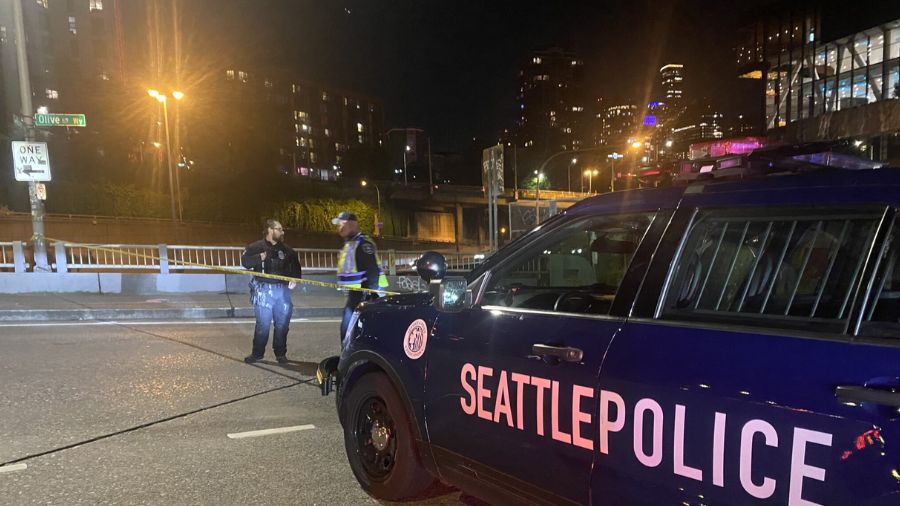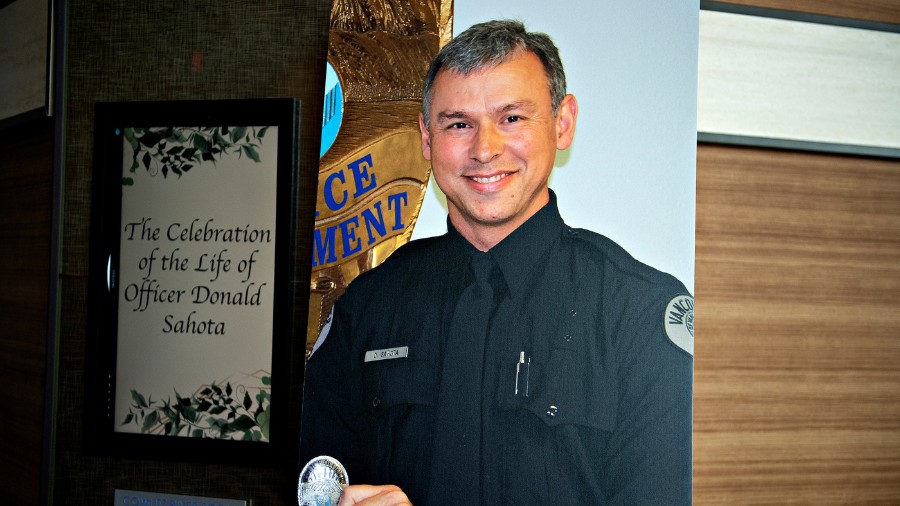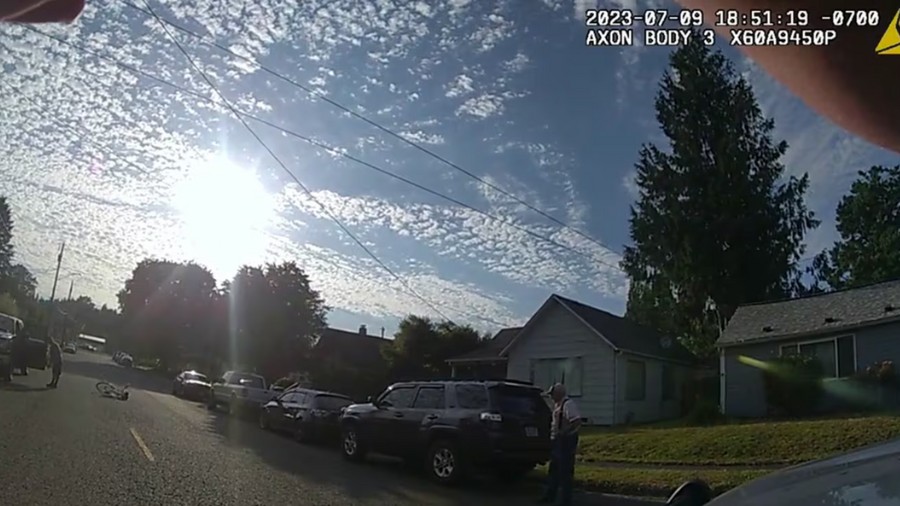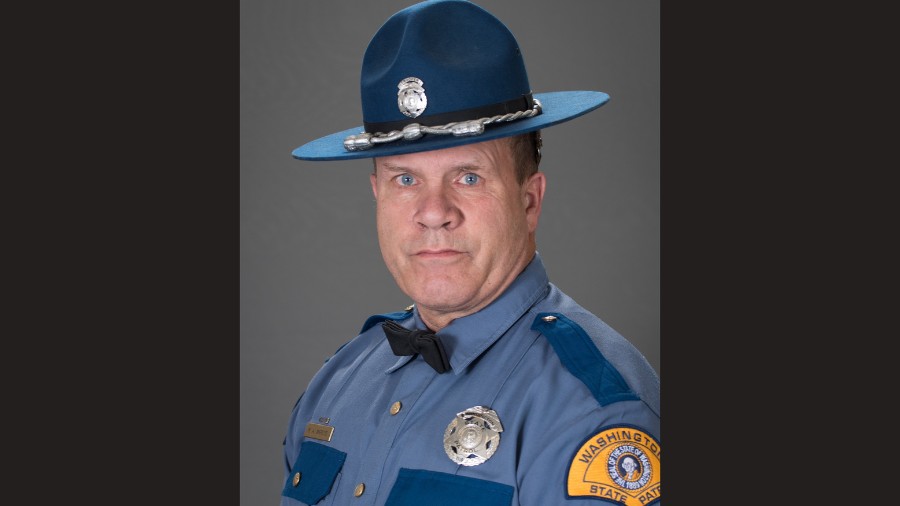The Letter Season 2: Jail visits are a tough place to try and get to know someone
Apr 30, 2024, 4:28 PM
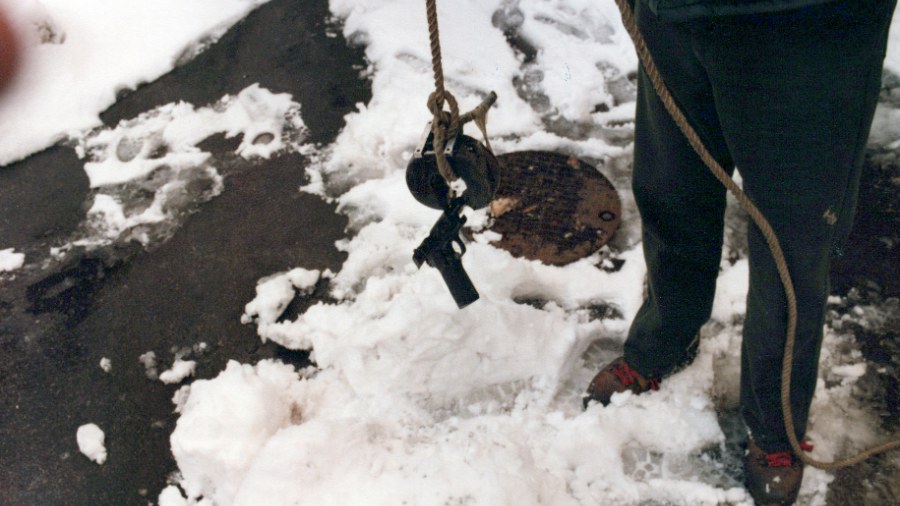
A gun was found at the crime scene in Utah in 1982. It is the murder weapon Michael Patrick Moore confessed to using to kill Jordan Rasmussen and Buddy Booth. Deputies found it in the sump with the use of a strong magnet at Log Haven Resort, March 5th, 1982. Episodes of Season 2 of The Letter from KSL Podcasts are now available. (Photo courtesy of Salt Lake County Sheriff's Office)
(Photo courtesy of Salt Lake County Sheriff's Office)
Editors’ note: Edward K. Brass is Amy Donaldson’s spouse and is the only surviving member of the defense team for Michael Patrick Moore. Brass was interviewed by multiple members of The Letter team, including Amy Donaldson.
SALT LAKE CITY, Utah — For attorney Edward K. Brass, the decades have not diminished how ominous it was to meet with clients at the Salt Lake County Jail that no longer exists.
“The old jail was in the basement adjacent to the courthouse, and it was difficult to get in and out of,” Brass said. “(The entrance) was very dark, reeked of oil and gasoline.”
With two underground entry points, unreliable fluorescent lighting, and a sour stench that he can still summon, it was as uninviting as the hulking metal doors that blocked both entrances.
“It had very heavy doors, and if one of the doors was left ajar, you could get stuck in an elevator or stuck in a visiting area for a long time,” he said.
More on The Letter: Podcast’s second season debuts; focus is 1982 murders of 2 fathers
Episode 2: Sense of dread precedes second 1982 Millcreek Canyon murder
Suspect’s family hires a defense attorney
After Michael Moore’s parents learned their only son would be facing the death penalty for confessing to killing 32-year-old Jordan Rasmussen and 24-year-old Buddy Booth, they hired one of the most well-known defense attorneys in Utah. He was a chain-smoking, fast-talking, man named Robert Van Sciver. He was known for his knowledge of the law, his flair for the dramatic, and his hair.
“It was parted on the side,” Brass said, “but he was going bald, and he was very vain about that. And so he would spend an inordinate amount of time every day, literally sort of knitting his hairstyle together – and using hairspray to make sure that it stayed in place.”
And Van Sciver brought the same kind of meticulous care — and confidence — to every courtroom fight.
“(He was a) very confident man, very capable trial lawyer,” Brass said. “I learned a lot from him. He was absolutely fearless. He would take on any case. He was not afraid of anyone. He was a very brave guy.”
Brass had been an attorney for about five years, but working alongside Van Sciver meant this was his second death penalty case. He did whatever his mentor needed – and sometimes that meant writing legal briefs, sometimes that meant visiting new clients in the jail.
The worst aspect of those jail visits was the location where attorneys had to meet with their clients. It was a room the size of a walk-in closet secured by a heavy, unwieldy door that locked the second it slammed shut, trapping attorneys into the visiting chamber with no way to communicate with the outside world.
It was a tough place to try and get to know someone.
“There was a mesh screen, you know, a wire mesh screen with heavy gauge wire, so that you couldn’t see the face of the person you were talking to, which, for me, is a huge disadvantage,” Brass said. “ I can’t really tell what kind of emotions a person is showing without being able to see their face. It’s an important component in judging whether or not you’re getting accurate information, I think.”
Ed could only make out the rough contours of Michael Moore’s face as they began to talk.
“My memories of the first meeting were this is a pretty ordinary guy,” Brass said. “That Michael is just a guy off the street and didn’t seem like a person that had a lot of problems outwardly, just seemed like a totally normal person.”
Ed knew what had happened through press reports, and he knew Moore had confessed. But he hoped to learn about Michael’s background, get his perspective, and try and understand what led him to kill two people – one of whom he didn’t even know.
But the more Ed learned, the more baffling it all was.

The laundry van where the bodies of Jordan Rasmussen and Buddy Booth were found at Log Haven Resort, March 5th, 1982. Episodes of Season 2 of The Letter from KSL Podcasts are now available. (Photo courtesy of Salt Lake County Sheriff’s Office)
Learning about Michael Moore in The Letter
Michael Patrick Moore was 25 years old when he was arrested. He was born and raised in Salt Lake City — the only child of devout Catholic parents. He attended private Catholic schools and he dreamed about one day attending medical school.
One old Salt Lake Tribune article about Moore said schoolmates called him ‘the shadow.’ Friends said Moore always wore suits to school, never played sports and on Sundays, the Moore family arrived first at their Catholic church and always sat in the front pew.
Everyone described Michael as extremely intelligent. He even volunteered to help his coworkers study for their chemistry and calculus classes. He’d worked at Log Haven for seven years, rising through the ranks from groundskeeper to general manager. Friends said the job helped transform him from shy to outgoing and friendly.
Brass couldn’t piece together a picture of this man that made sense. Most of the people in his situation, accused of murder, have life-long struggles with drugs, alcohol and at least some criminal issue. But Moore had none of that.
“All of a sudden, he’s involved with killing two people,” Brass said. “That was hard to wrap your head around at first.”
It wasn’t just Michael’s lack of criminal history that made his actions so hard to understand. It was his demeanor as they discussed what happened at Log Haven the morning of the murders.
“He was always very calm,” Ed said, “Very calm, and very well spoken. Very bright.”
As he tried to conjure a picture of Michael up through the heavy mesh screen, it was almost as if he wasn’t talking to a person who’d snuffed out the lives of two young fathers, a person who now faced the possibility of a firing squad.
“The thing that stunned me the most was that after talking about the fact that he killed two people, he thought that the police would see it his way and he was gonna get released,” Brass said. “He still thought that when I saw him (days later). There was just no question his mind; he was going to be released.”
While the defense team struggled to understand why two men were murdered at Log Haven, prosecutors saw no such ambiguity.
“Michael Moore’s story was that he was in fear of his life because he had been told ‘You’’re in danger with these folks’,” recalls prosecutor TJ Tsakalos. “And I’m going well, where is it that you would be so afraid that you had to take the gun, for the meeting that you called, and then shoot two people over it? I couldn’t get into his head as to why he was thinking the way he was thinking. I came up with the term ‘chameleon’. I thought he could change colors to manipulate you. So my theory was, he made it up to try to justify what he did.”
Trial was on a ‘fast track’
None of them had to wait long for answers. Just six months after the murders, Michael Moore sat in a courtroom above that labyrinth of tunnels to the jail trying to convince a jury he didn’t deserve to face a firing squad for what he’d done.
“This homicide occurred in March and we were trying it by August, the same year,” Tsakalos said. “ This was on a fast track. It got done.”
While the stakes don’t get any higher than a death penalty case, in this instance, there was never a question of guilt or innocence.
In fact, both sides would rely on the same basic facts – Michael Moore shot Jordan Rasmussen after driving him up the canyon the morning of March 5, 1982. And then he killed Buddy Booth when he arrived while Michael was trying to dispose of Jordan’s body. There was a long list of physical evidence, and, of course, that detailed confession.
Defense attorney Ed Brass said they knew they were fighting long odds.
“I think that we had the pair of twos as far as playing the poker hand goes,” he said.
Everyone knew the real fight was whether the 25-year-old should face a firing squad or spend his life behind bars. Prosecutor John T. Nielsen called it a “slam dunk” death penalty case. Both families of the victims supported the efforts to send Moore to the firing squad.
“I remember seeing Michael Moore across from me,” said Buddy Booth’s widow Carla Maas. “ And him just looking at me, and it kind of — it scared me. It made me very nervous.”
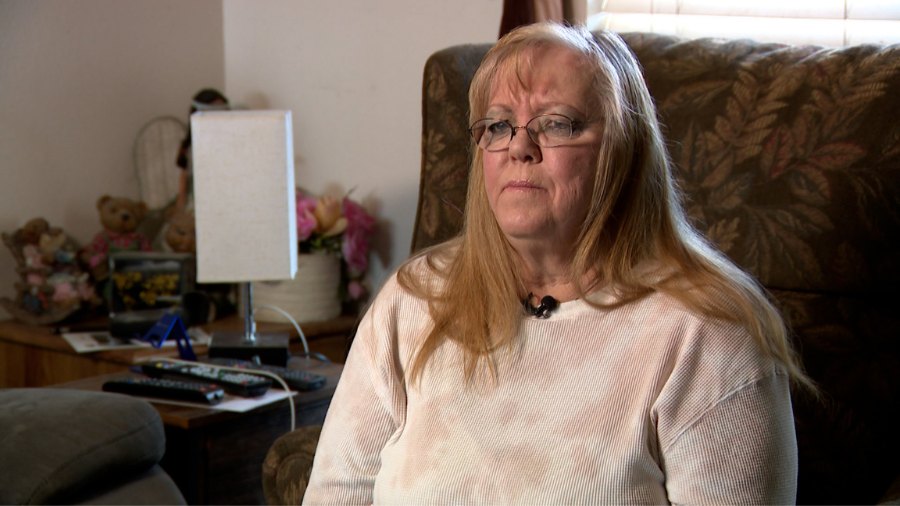
Carla Maas sits in her home in West Valley City, Utah. Episodes of Season 2 of The Letter from KSL Podcasts are now available. (Photo: Jay Hancock, KSL TV)
The prosecutors showed her the clothes her husband wore to work that day.
“It was bloody,” she said. “It was really tough. And all I could do was cry.”
But her tears were not just spawned by sadness.
“I was angry,” Maas said. “I was furious because – why would he kill an innocent man? I didn’t think he deserved to be on this earth for killing two people. I felt that he deserved to die, as well.”
Listen to episode 3 of The Letter, Season 2: Ripple Effect below.
You can listen and follow The Letter – Season 2: Ripple Effect wherever you find your favorite podcasts. New episodes are available every Tuesday.
You can also find episodes, pictures, and stories at theletterpodcast.com.
Read or listen to more:
- Episode 2: Dead Men Speak No Lies
- Episode 1: He Didn’t Deserve to Live
- “The Letter” details journey from Utah murder through grief to redemption
- Forgiveness and your health: What science says about the benefits
- After the murder of Zachary Snarr, a family tries to rebuild
Amy Donaldson is an executive producer with KSL Podcasts. You can view more of her work here.


